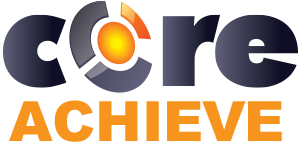The Most Common Issues with Compliance Training
February, 21 2023
Other posts:
Enhancing Team Dynamics for Effective Group Decision-Making with LMS Integration
Organizations increasingly rely on collaborative efforts to solve complex problems, innovate, and adapt to change, but how do we ensure that collaboration is happening.
Maximizing Small Business Potential with Training Technology
Training technologies can push small businesses ahead of their competitors, but what are the factors that go into choosing the right technology?
Unlocking Employee Potential: The Transformative Benefits of an Interactive Learning Management System (LMS)
Interactive training allows for unlocking employee potential, but how is it done?
Building a Robust Sales Pipeline with Training
Every organization wants a streamlined sales pipeline, but building one requires a series of interlocking activities with one of the most important being training.
Strategies for Adapting In-Person Training to Online Platforms
Online training is one of the most flexible ways of delivering training across organizations, but how do you even begin to adapt in-person training into online?
Are you confident in your compliance training? Compliance training is essential for so may organizations, but it's too easy to overlook these common issues.
Compliance training is one of those essential pillars of any organization’s program. The reasons for this go beyond avoiding legal ramifications, as compliance training allows the organization to mold the type of people, or culture, they want. However, despite the sway that compliance training can have, some organizations compliance training has distinct problems slowing its efficiency.
Dusty, Outdated Content
Content being outdated is by-far the most common problem that plagues training broadly, but especially impacts compliance training. All too often training is comprised of dusty courses that would only feel appropriate on a hazing, deteriorating tape, this invalidates the information and makes the learner skeptical at best. You should watch out for this if your organization has used compliance training for a while, as the problem isn’t typically with resources, but rather a lack of reviewing systems already in place.
Boring Content
Unfortunately, for many learners, the idea of compliance training being boring is a given and you can’t really fault them, after all, would you want to take all those courses again? Many compliance courses lack any character, either trying too hard to be entertaining or so sterilized that it ends up being devoid of emotion. The easiest way to handle this is by thinking about how the user interacts with the course. If the course is just endless videos followed by a couple multiple choice questions, any style would be boring within ten minutes. You could remedy some of this boredom by switching how the learner tests their knowledge or finding a course that does.
Depressing Content
This comes as the opposite of boring content, where compliance content spurs too much of a reaction. Compliance training has to cover most of the situations that the learner could possibility end up in—even if it is very rare. This naturally leads to content like robberies or shootings being discussed in length while most likely immersing the learner in thoughts of these things happening to them. The content here is necessary, but it could easily hamper one’s mood, motivation, or optimism. While you have to keep the content with it’s serious tone, putting some space between the heavier courses will ease the taxation on the learner.
Difficult (or Dense) Courses
While some courses maybe outdated, boring, or depressing, some may just be too difficult to maximize learning potential. Now, difficulty doesn’t have to inherently do with the learner’s inability to grasp the subject (most people will be able to) but everything surrounding the subject, like the questions, structure, or phrasing could be artificially increasing the challenge. Perhaps “dense” would be a better way to describe these courses. There are many dense courses out there, often created by someone who never engaged with their work from another perspective, resulting in a course that is crafted for only one person to understand.
No Way to Track Progress
Tracking progress is the best way to tell how your learners or a course is performing. Obviously tracking would tell you a lot of useful information about your learners, but how would it do that for courses? Well, with granular enough data, you could take apart every aspect of a course, like what percentage of learners get a given question wrong. Tools like that are particularly useful for understanding dense courses as you might not be able to see anything wrong with them, but if most learners are struggling, then it most likely is the fault of the course.
Not Measuring Effectiveness
Measuring effectiveness is one of the most important but difficult aspects of compliance training. After all, if your compliance training isn’t effective than what’s the point of having it? Now there is a problem with this question, assuming it’s not effective, but this opens another question: what is being effective? You could claim something like how quickly people can complete the training, but what if those people don’t follow it? To truly measure effectiveness of compliance training, you must consider multiple variables like do learners follow it, how fast do they complete it, how well do they remember it, or did they enjoy it. Unfortunately, there is no one-size fits all for measuring effectiveness, but you could begin with the aforementioned metrics.
Compliance courses are essential to organization, but just being essential does not mean it is given adequate attention. Your compliance requirements might be suffering from one, two, or maybe all the issues outlined above which will dampen your organization—if it hasn’t already. Compliance at best allows your organization to steer where the culture of organization goes while improving other vitals, like safety and, at worst, makes individuals accountable for their own actions.
Get started with CoreAchieve for free.
Photo by NordWood Themes on Unsplash

Leave comment: